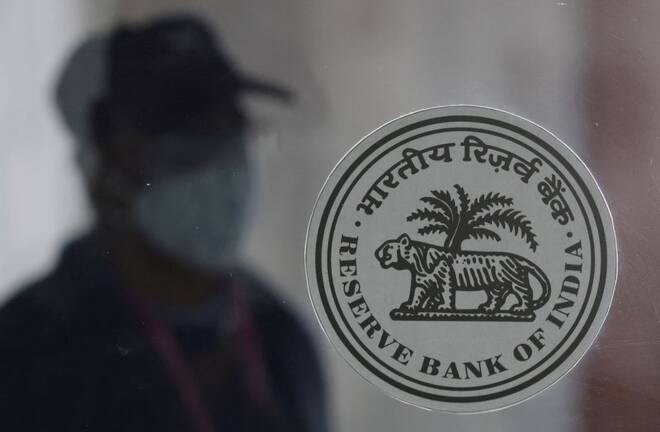Advertisement
Advertisement
India pauses rate hikes in surprise decision, but door open for more
By:
MUMBAI (Reuters) - India's central bank held its key repo rate steady on Thursday, after having raised it at each of six previous meetings, as risks to growth have risen following recent global financial turmoil.
By Swati Bhat and Sudipto Ganguly
MUMBAI (Reuters) – The Reserve Bank of India (RBI) surprised markets by holding its key repo rate steady on Thursday after six consecutive hikes, saying it was closely monitoring the impact of recent global financial turbulence on the economy.
The central bank said its policy stance remains focused on “withdrawal of accommodation”, signalling it could consider further rate hikes if necessary, but a number of economists now expect the central bank to remain on hold.
“It is a pause, not a pivot,” RBI Governor Shaktikanta Das said at a media conference after the monetary policy announcement.
The monetary policy committee (MPC), comprising three members from the central bank and three external members, retained the key lending rate or the repo rate at 6.50%.
Most analysts had expected one final 25 basis point hike in the RBI’s current tightening cycle, which has seen it raise the repo rate by a total 250 bps since May last year.
“We expect the RBI to maintain an extended pause and evaluate the lagged impact of previous rate hikes and global uncertainties on growth-inflation dynamics,” said Upasna Bhardwaj, chief economist at Kotak Mahindra Bank.
Some other central banks, including in Canada, Australia and Indonesia, have similarly paused, while the U.S. Federal Reserve, Bank of England and the European Central Bank have indicated they may pause, to assess the impact of past hikes and banking sector turmoil on growth and inflation.

“We have to be extremely prudent in our actions,” Das said in his statement.
While the central bank has taken the decision to pause rate hikes in light of global macroeconomic and financial conditions, “our job is not yet finished and the war against inflation has to continue”, Das said, reiterating the resolve to bring inflation back within the central bank’s target band of 2%-6%.
Retail inflation rose 6.44% year-on-year in February, easing from 6.52% in January but has remained above the central bank’s mandated target range for 10 out of the last 12 readings.
The central bank sees inflation at 5.2% in 2023-24, and GDP growth is seen at 6.5% in the financial year beginning April 1.
“With unyielding core inflation, we remain firm and resolute in our pursuit of price stability which is the best guarantee for sustainable growth,” said the committee in its statement.
“The impact of our actions over the past 12 months is still playing out and would increasingly weigh on the future inflation trajectory.”
It is necessary to assess the cumulative impact of actions taken so far, said Das.
Early signs of a slowdown have been visible in bank credit growth which has slowed to 15.7% on-year as of March 10, easing from a decade high of 17.9% touched in October.

Financial stability concerns appear to have prompted the pause in rate hikes, said Aditi Nayar, chief economist at rating agency ICRA, adding that another hike was possible if inflation does not fall.
The decision to hold interest rates steady was unanimous in contrast to the last decision when four members had voted for a hike in rates.
Five of the six committee voted in favour of continuing with the stance of “withdrawal of accommodation”, while one member dissented.
“Retaining the stance at removal-of-accommodation also signals a continued focus on steadily guiding inflation down towards the 4% target,” said Saugata Bhattacharya, chief economist at Axis Bank.
The hiking cycle could resume if the data warrants it, said Shilan Shah, deputy chief emerging markets economist at Capital Economics. “But given the subdued growth outlook and the likelihood that inflation falls back to within the RBI’s target range before long, our view is that the tightening cycle is at an end.”
Barclays does not expect any further rate hikes in the cycle. “We think only a material upside surprise keeping CPI inflation above 6% for a long period would warrant another rate action by the MPC,” said Rahul Bajoria, chief India economist at Barclays.

Government bond yields fell sharply after the surprise RBI decision. The 10-year benchmark 7.26% 2032 bond yield dropped to 7.1469%, the lowest level since Sept. 15 immediately after the policy announcement, against 7.2857% before the decision. The yield was at 7.21% as of 1.20 p.m. IST (0750 GMT).
The Indian rupee declined marginally against the U.S. dollar. The rupee was at 81.98 to the dollar against 81.88 prior to the policy announcement.
(Reporting by Swati Bhat and Sudipto Ganguly; Writing by Ira Dugal; Editing by Sonali Paul)
About the Author
Reuterscontributor
Reuters, the news and media division of Thomson Reuters, is the world’s largest international multimedia news provider reaching more than one billion people every day. Reuters provides trusted business, financial, national, and international news to professionals via Thomson Reuters desktops, the world's media organizations, and directly to consumers at Reuters.com and via Reuters TV. Learn more about Thomson Reuters products:
Did you find this article useful?
Latest news and analysis
Advertisement
